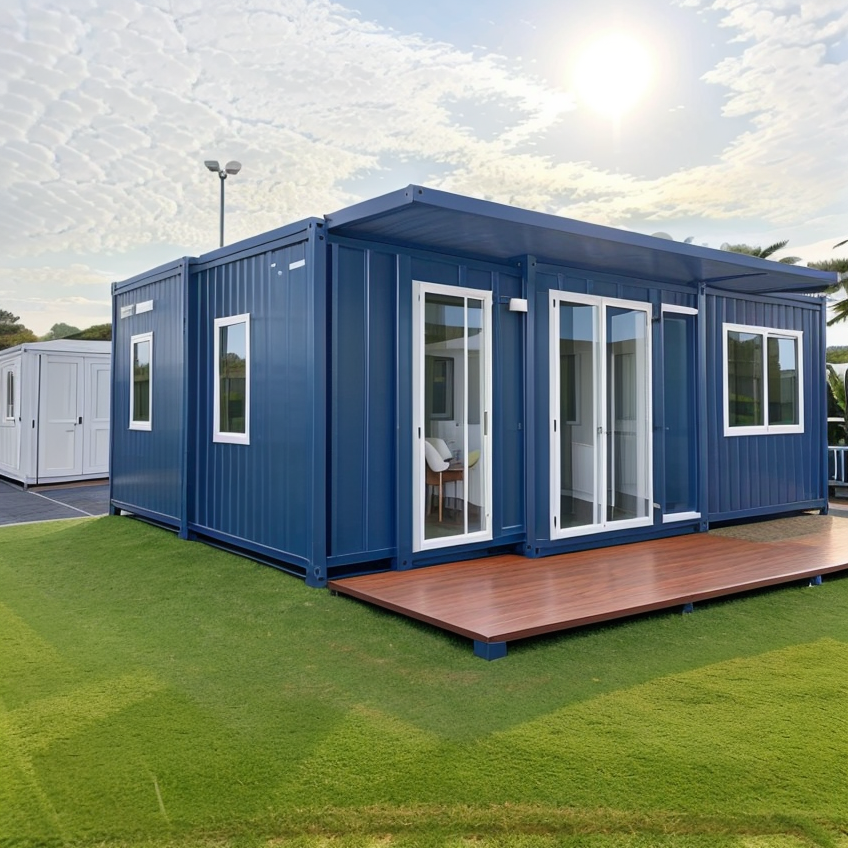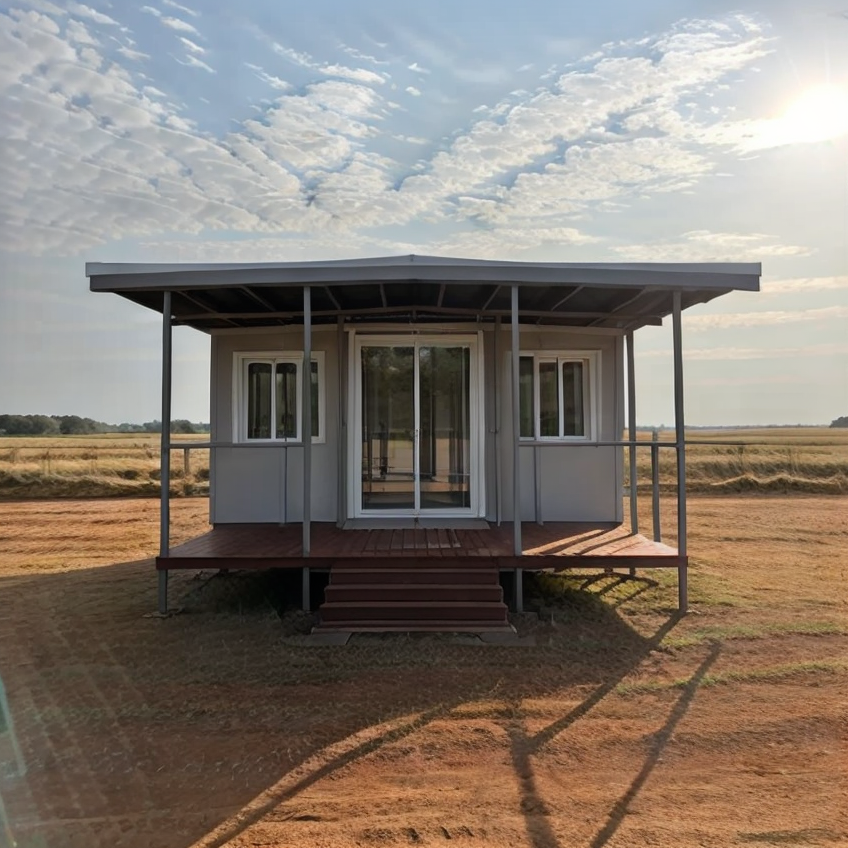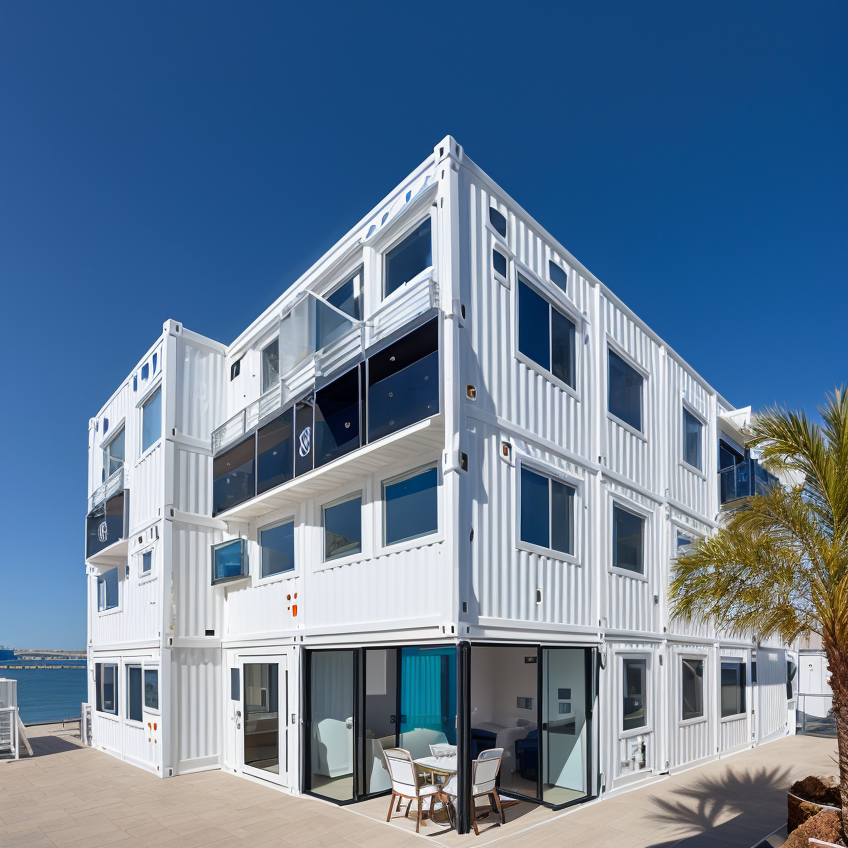Complete Analysis of Prefabricated container house: A One Stop Buyinh Handbook
Do you want to get a home completely customized according to your preferences at a lower cost? Consider exploring prefabricated housing. With the rapid development of this field, homebuyers now have more opportunities to choose and realize their ideal living spaces.
What Is A Prefabricated (Prefab) Home?
Once you have identified the type of housing that suits your needs, prefabricated housing provides an alternative solution. They are built in the factory and can be delivered as a complete unit or split into multiple parts and assembled on your land to provide the design and functionality you expect.
Prefabricated houses provide you with the same design freedom as wooden houses, allowing you to customize floor plans and house functions according to your preferences. At the same time, the type of prefabricated housing you choose will also affect the foundation types you can choose.
Diversity of prefabricated houses
Prefabricated houses offer a wide range of design options and diverse floor plan layouts. The type of house you choose not only determines its construction method, but also whether it is delivered as a complete unit or transferred in the form of prefabricated components.
Modular housing
Modular housing is prefabricated off-site and then transported to the construction site for assembly. Unlike traditional chassis based buildings, modular houses are typically built on permanent foundations and provide greater flexibility in design. After delivering multiple prefabricated units, these houses are assembled on site by cranes, and the final product is almost identical to the wooden structure houses built on site.
Suite Room
A kit house is a pre manufactured component designed for on-site assembly. They are often referred to as "DIY" homes because they are simple enough that even homeowners can build them themselves. A typical example of a suite house is a small wooden house, and recently, micro homes have become a popular choice among suite houses.
Panel style residence
A paneled house is constructed in sections and then placed on a pre prepared permanent concrete foundation. This type of house typically includes a flooring system, interior and exterior walls, and roof trusses. Firstly, the foundation is built on site, and then the various parts of the house are transported to the site and assembled.
Container houses
The use of recycled containers as the main structure of houses is becoming increasingly popular due to their innovation and cost-effectiveness.
Light steel villa
Built with light steel frames, this type of prefabricated housing is favored for its lightweight, high strength, and rapid construction capabilities.
Ecological prefabricated houses
Focusing on sustainability and environmental impact, eco-friendly prefabricated houses use eco-friendly materials and often integrate renewable energy systems.

The average cost of prefabricated houses
The overall cost of prefabricated houses is influenced by factors such as design complexity, foundation selection, and floor plan layout, with a price range typically between $50000 and $300000. This construction method has become one of the low-cost housing solutions due to its large-scale production of materials.
Other reasons why prefabricated houses are so cheap include:
Prefabricated houses are cost-effective due to mass production, indoor construction, and reduced labor.
Prefabricated houses have low costs due to indoor production and bulk material procurement.
The price of prefabricated houses is reasonable, thanks to indoor construction and mass production.
Prefabricated houses save costs due to indoor construction and bulk procurement of materials.
Prefabricated houses are economical due to their time-saving interior construction and low material costs.
Prefabricated houses are quickly assembled, shortening the construction period and reducing related costs.
The standardized component design of prefabricated houses reduces complexity and cost, and improves production efficiency.

The advantages and disadvantages of prefabricated houses
Prefabricated houses have both advantages and disadvantages. It is crucial to weigh these factors when deciding to purchase or build a house.
The advantages of prefabricated houses
Disadvantages of prefabricated houses

Prefab Home FAQs
The difference between modular and prefabricated houses:
Prefabricated houses are a broad term that encompasses various types, including modular houses, which are built on assembly lines in factories and then transported to designated locations for assembly. This construction method is usually cheaper than traditional wooden houses because assembly line operations reduce labor costs.
Ways to purchase prefabricated houses:
Prefabricated houses can be purchased in multiple regions, and some companies such as Plant Prefab and even Amazon offer sales services for prefabricated houses.
Construction cycle of prefabricated houses:
Building prefabricated houses takes an average of four to six months, which is faster than traditional house construction because many processes are completed in batches indoors and are not affected by weather.
The value of prefabricated houses:
For homebuyers seeking affordability and the ability to participate in the home design process, prefabricated housing is a worthwhile choice to consider. They not only have attractive costs, but modern building technology also ensures their quality.

Choose A Suitable Prefabricated Housing Company
Guangzhou Moneybox Steel Structure Engineering Co.,Ltd is located in Pan yu district, Guangzhou city, with plant area of more than 32,000 square meters and over 300 staff. We've got a one-stop supply from design, production, construction to marking. Moneybox provides many practial products, such as prefabricated houses, liht steel villas, continer house, sentry boxes, portable toilets, additional layers, partition walls, large-scale plants and warehouses, accommodations, etc.
Prefabricated houses provide a modern, efficient, and environmentally friendly housing solution. Through this analysis, we hope you can gain a better understanding of prefabricated housing and make informed decisions during the purchasing process.